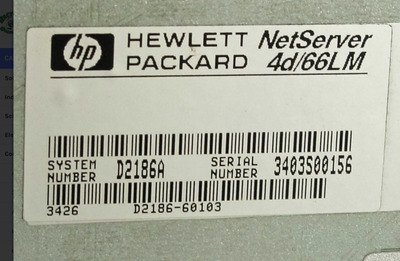chinny22 wrote on 2021-07-19, 10:07:
Do you have this actually setup? sounds awesome! what hardware/software you running?
There you go you've impressed me that's another excuse 😉
Currently since I've moved house, no. I've been more concerned with horrifying wiring, plumbing etc. My setup before I moved was based around a Madge MAU. It's actually a token ring switch. It can have 4 separate rings. Also does dual ring at 32Mb/s, I haven't played with that though. One of the coolest features is an uplink port that can do fast Ethernet but it is impossible to find the card for it. Even Louie Ohland (9595 pages) can't find one. I had just started to add a 4MB's ring to it and had to move. Had a bit of trouble setting up the router with 3 cards though. So almost that setup.
The router for Ethernet to token ring is based of Damn Small Linux. Which is based of Knoppix, based of Debian. This means that configuration was a little tricky. As there is the Linux way, Debian way, Knoppix way and DSL way of configuration files. Anyway it worked for 10+ years. Had most of my PS/2 and a few other things like cheap print servers connected to it. Ran the thing on an IBM PC330 (Pentium 120). If i were going to make a router again I would probably use Slackware. Here is a HDD image of the router. If you use it, don't throw any crazy hardware at it. It's DSL from 10 years ago, think 2.4 kernel IIRC.
http://66.113.161.23/~mR_Slug/projects/eth-tr-router/
I did a bit or research on pre fast Ethernet (pre '95). Seems like 16Mb's was the fastest practical option. FDDI was not really at end computers till '91 and then really only at servers. Haven't researched passed '92 though. There is an article in Infoworld from '90 or '91 about Microsoft upgrading the network to FDDI, at the time their ENTIRE network was one Ethernet backbone (with bridges). That should give an indication of speed back then even at a company that was rich.
So 16Mb/s token ring is really the performance option from '89 to '94 and fits in well with the 486 era. On a small network you'll probably get close to that anyway, which it far faster that it would have been back in the day on a large network. I really wouldn't recommend anyone go the token ring route unless you have MCA machines. You're far far better off getting F Ethernet in your systems.
Another use for old servers is .... a server. I ran a DEC server 7000, Quad Ppro (2 installed) from ~2003 to ~2018 with win 2000. Now it made a lot more sense in 2003 when I got it. Realized it had probably cost me 5K (yikes!) in electric over that time, got it on the business though:-). Decide to run the server on a P3 laptop after that, but it broke in shipping when I moved. Never really intended it to run this long, but never got round to upgrading it, so it stayed and stayed.
